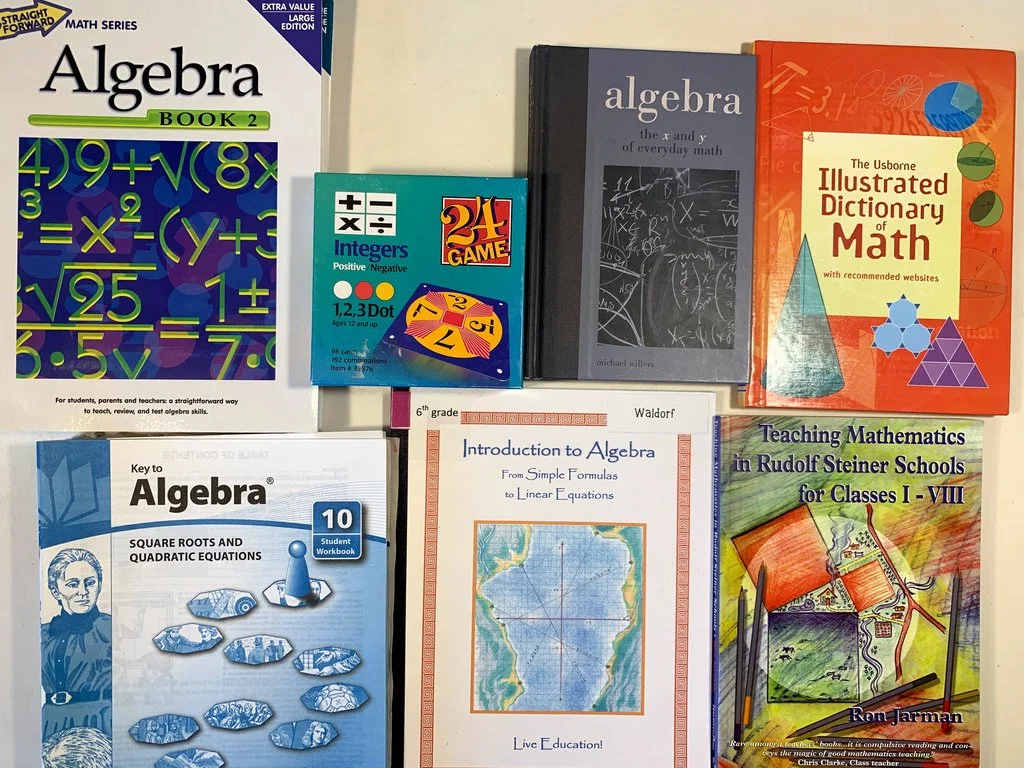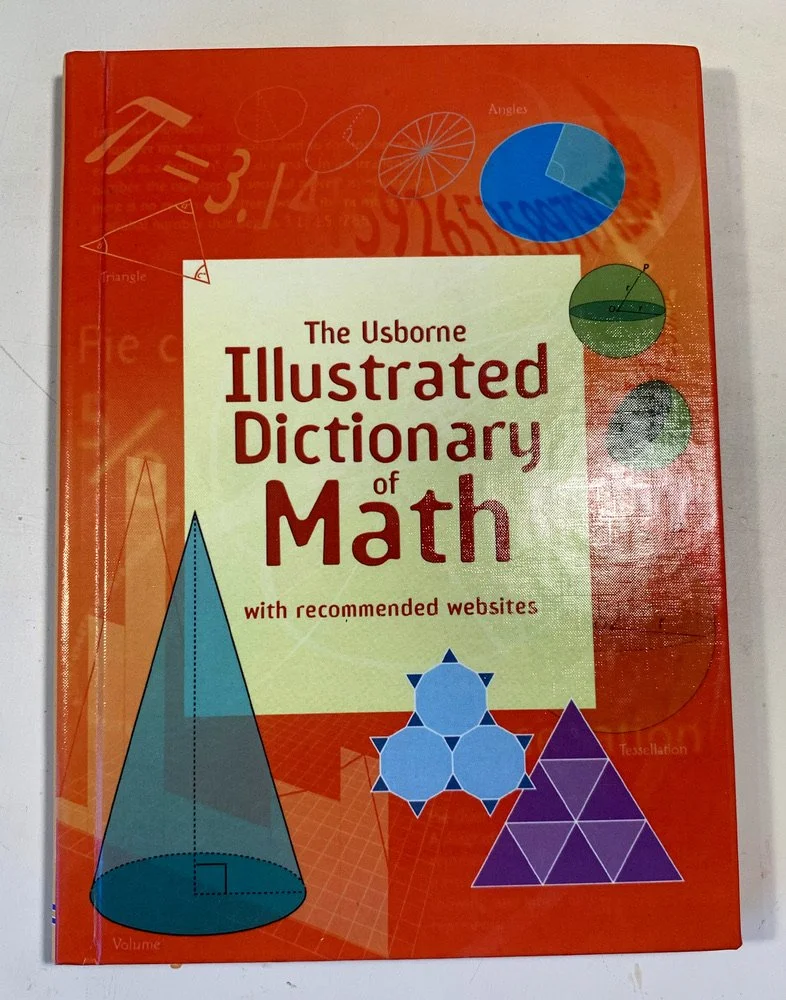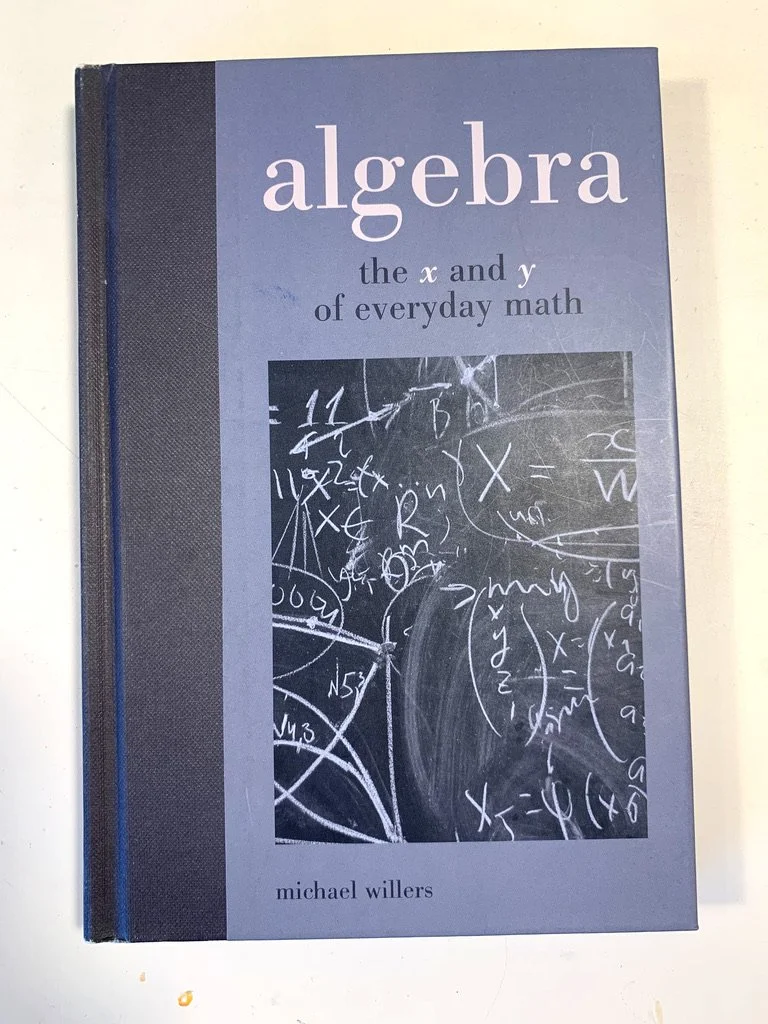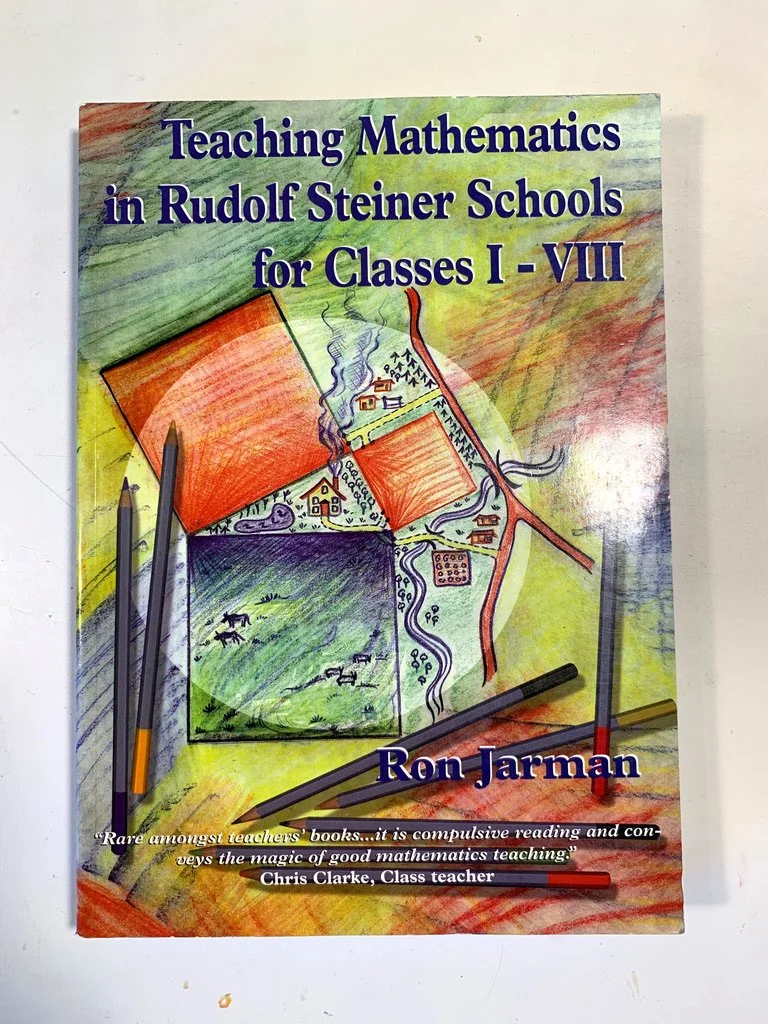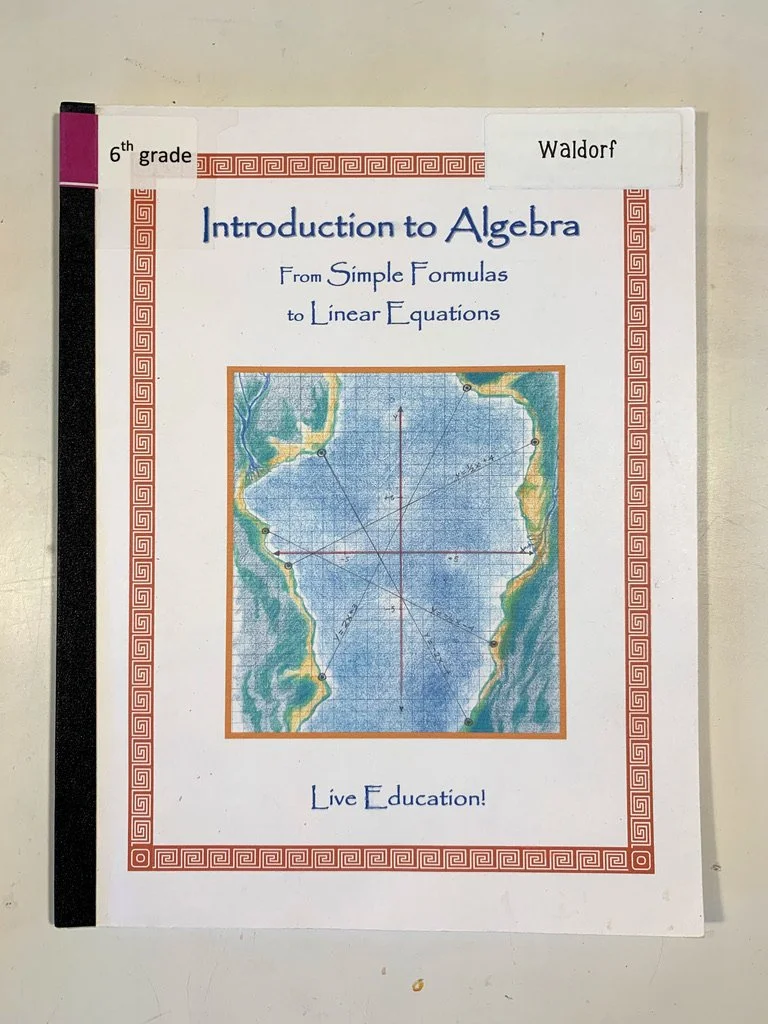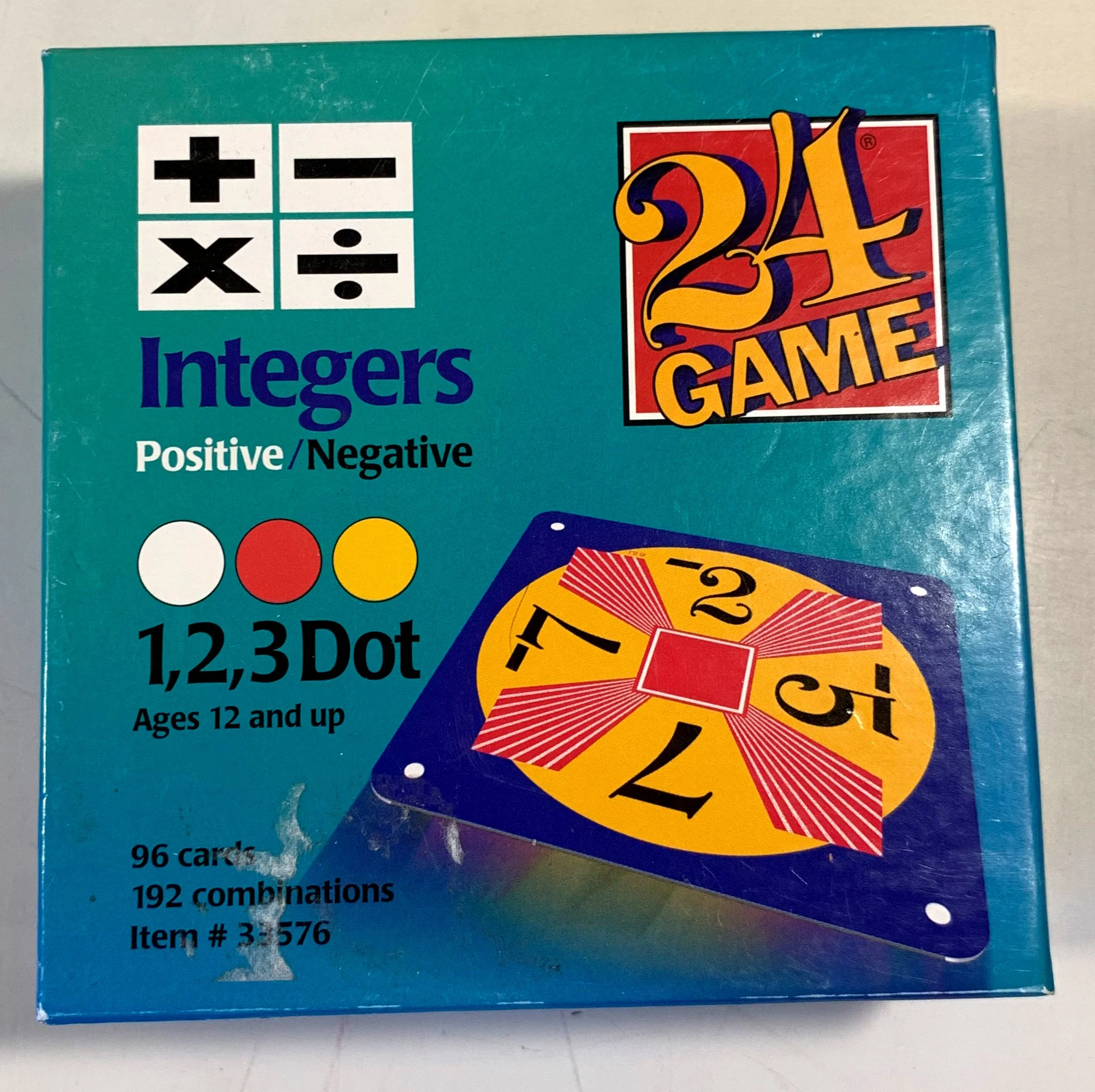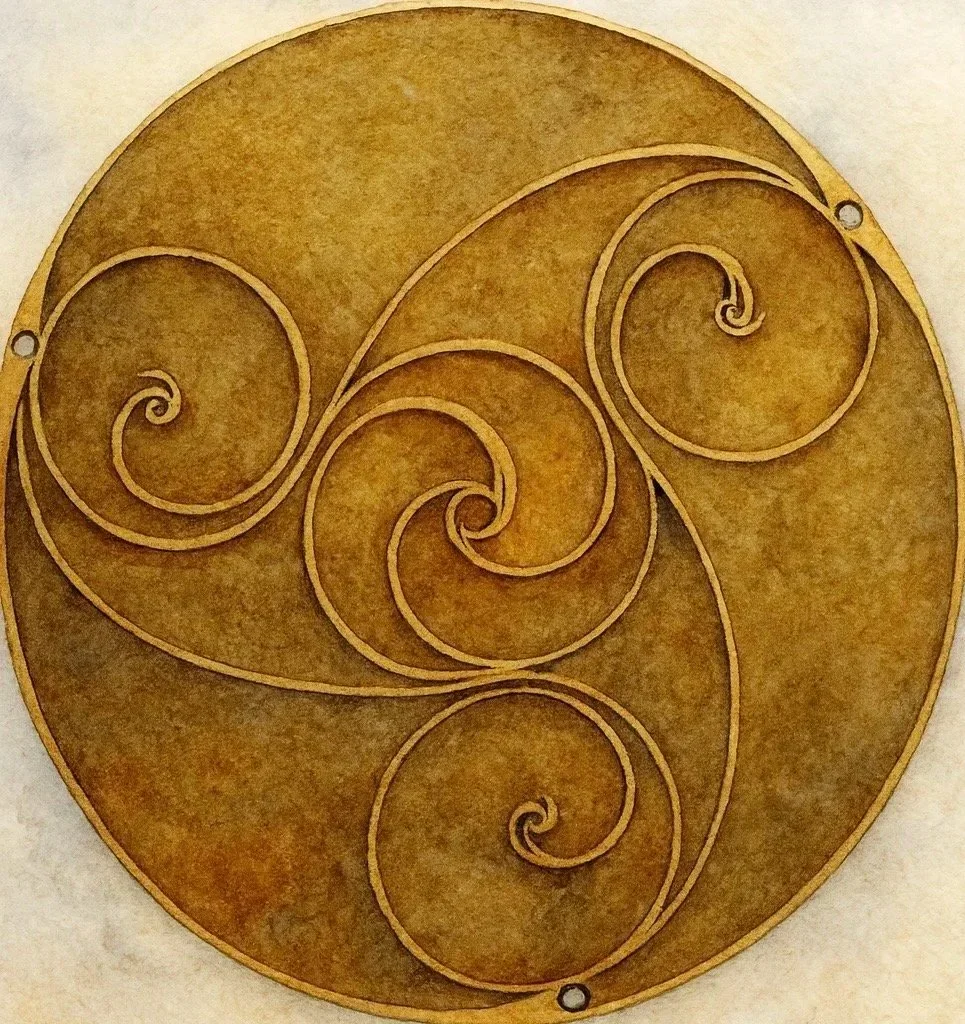
Algebra
When it comes to teaching Algebra the Waldorf way, I admit, I haven't stayed true the teaching method. Instead, I've relied on the Key to Algebra as a teaching tool to introduce and teach algebra in a slow and gentle way. While we do have the Live Education Waldorf curriculum for middle school which includes the Algebra main lesson book and Teaching Mathematics in Rudolf Steiner Schools, I didn't use them as much as I would have liked. In part because the imaginative and real life approach to algebra was such a departure from the way I learned and understood math, I had a hard time getting my mind reoriented so that I could teach it that way. As a result, my children missed out on this approach. One resource we are enjoying immensely is Algebra, The x and Y of Everyday Math. While math games are sparse when it comes to algebra, 24 Game Integers it a winner! It's fun, challenging and educational.
Algebra Resources
-

Algebra Resources | Waldorf Approach to Teaching Algebra
When it comes to teaching Algebra the Waldorf way, I admit, I haven't stayed true the teaching method. Instead, I've relied on the Key to Algebra as a teaching tool to introduce and teach algebra in a slow and gentle way.
-
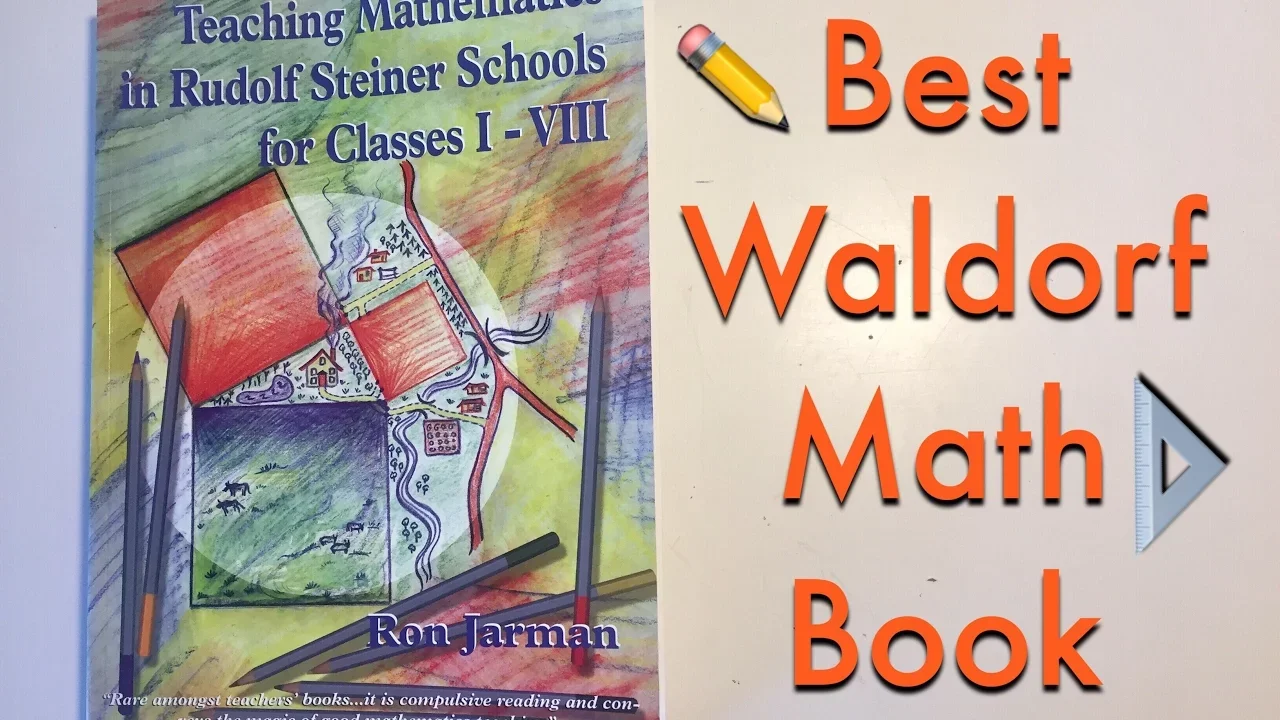
Teaching Mathematics in Rudolf Steiner Schools for Classes I-VIII
If you've ever wanted to learn more about how math is taught in Steiner schools (Waldorf education), this book will take you from conception to application. Teaching Mathematics in Rudolf Steiner Schools for classes I-VIII by Ron Jarman is the most comprehensive books on mathematics I've ever seen. It's beautifully written with many mathematically illustrations and examples.
-
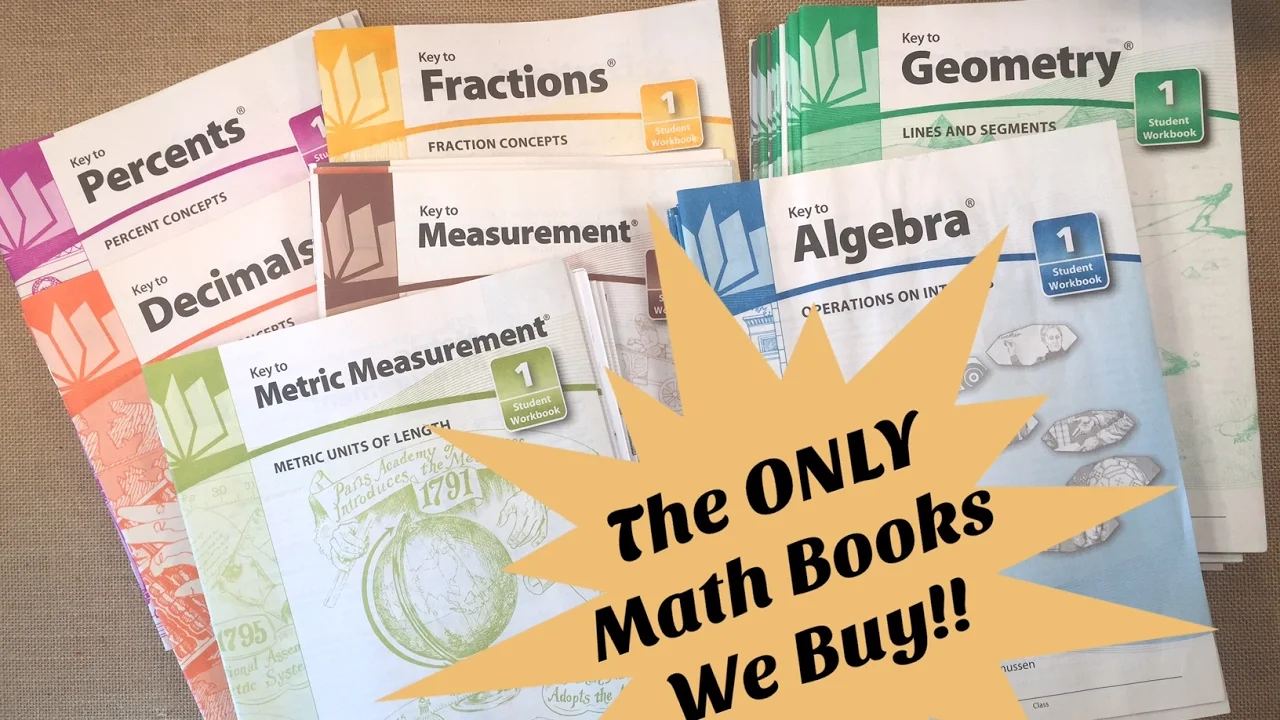
Math Curriculum Workbooks | MUST HAVE | Key to Curriculum
Key To math series are the only math books we ever buy. They are simple, student-led and environmental friendly! You read it right, they are environmental friendly. The workbooks contain about 45 pages and are printed on thin paper similar to newsprint paper.
-

Key to Math Series | Math Curriculum for Fractions, Decimals, Percents, Algebra and Geometry
Key to math curriculum series is a workbook series that covers the topics of measurement, metric measurement, fractions, decimals, percents, geometry, and algebra. Work books are designed for easy self direction with little additional support. Each section provides simple examples and clear directions for understanding the math topic.
-

Math Workbooks | Algebra, Geometry, Fractions, Decimals and Trigonometry
Workbooks. They have a place in a school setting, but when they are overused or are the means of teaching, they lose their effectiveness and novelty. One place we do use workbooks almost daily is with math. While the workbooks we use are simple, they are effective.
-

How to Play 24 Game
Ever wanted to add math games to your curriculum but didn't want to spend the time finding them or learning how to play them? Today, I'll show you how to play 24 primer, 24 Integer, 24 Fractions/Decimals, 24 Add/Subtract and 24 Multiply/Divide.

Algebra
Algebra Resources | Waldorf Approach to Teaching Algebra
When it comes to teaching Algebra the Waldorf way, I admit, I haven’t stayed true the teaching method. Instead, I’ve relied on the Key to Algebra as a teaching tool to introduce and teach algebra in a slow and gentle way. While we do have the Live Education Waldorf curriculum for middle school which includes the Algebra main lesson book and Teaching Mathematics in Rudolf Steiner Schools, I didn’t use them as much as I would have liked. In part because the imaginative and real life approach to algebra was such a departure from the way I learned and understood math, I had a hard time getting my mind reoriented so that I could teach it that way. As a result, my children missed out on this approach. One resource we are enjoying immensely is Algebra, The x and Y of Everyday Math. While math games are sparse when it comes to algebra, 24 Game Integers it a winner! It’s fun, challenging and educational.
These resources are intended for middle school and high school; however, if you are using this as a high schooler, you may need additional resources to make your algebra course of high school caliber and rigor. Otherwise, there resources can be used for a gentle high school approach, a pre-algebra course or an algebra course that takes 1-2 years rather than a single year.
The Best Waldorf Math | Teaching Mathematics in Rudolf Steiner Schools for Classes I-VIII
If you've ever wanted to learn more about how math is taught in Steiner schools (Waldorf education), this book will take you from conception to application. Teaching Mathematics in Rudolf Steiner Schools for classes I-VIII by Ron Jarman is the most comprehensive books on mathematics I've ever seen. It's beautifully written with many mathematically illustrations and examples. In addition to general math information, Steiner philosophy and Waldorf education philosophy, the book includes chapters dedicated to each grade 1st through 8th grade with detailed information on the methodology of teaching math, specific examples to complement the text as well suggestions on how and when to teach particular math concepts. This book is rich with insight and information. The author conveys a deep understanding of math in general and specifically for its application in Steiner schools.
If you have no other book on math, this one would be adequate for writing your own math curriculum. It works perfectly to accompany a Waldorf curriculum and would be a wonderful addition to any home library for those who have a passion or interest in mathematics.
This is not light reading. Be prepared to pause and contemplate as you read it through. Though I use it as a reference book, I think it's definitely worth reading cover to cover.
If you've never been exposed to a different method of teaching and understanding math, this book will open your eyes and heart to the wonderful, mysterious and complex world of mathematics as seen through the eyes of Waldorf education.
If you wish to teach math using the Waldorf methodology, you can do so successfully using a number of Waldorf curricula. Our choice is Live Education.
This book may be hard to find at a decent price, but the following is the Amazon link.
Math Curriculum Workbooks
Key To math series are the only math books we ever buy. They are simple, student-led and environmental friendly! You read it right, they are environmental friendly. The workbooks contain about 45 pages and are printed on thin paper similar to newsprint paper. They are also simply laid out with easy to understand directions, so minimal instruction is needed. If you do need to help your child, the examples provided in the books are the perfect teaching tool. Simply write the example on a chalkboard or piece of paper and walk your child through the example. The series also comes with an answer key, which I highly recommend. The curriculum is sold individually or as a set, and I think they are really well priced. You can find the complete series at Rainbow Resource.
Key to Math Series | Math Curriculum for Fractions, Decimals, Percents, Algebra and Geometry
Key to math curriculum series is a workbook series that covers the topics of measurement, metric measurement, fractions, decimals, percents, geometry, and algebra. Work books are designed for easy self direction with little additional support. Each section provides simple examples and clear directions for understanding the math topic. The aim is for proficiency and eventually mastery of topics. They are focused on each of the subject areas without adding additional word problems or review questions or math, topics and other areas.
The geometry and algebra series do not have the rigor to support high school level, algebra and geometry. I find them perfect for middle school, geometry, and algebra or to support an existing curriculum. The algebra workbooks move slowly through algebraic concepts, including pre-algebra. We typically begin with measurement and metric measurement in grade 3 or 4. We continue with fractions, decimals and percents in grade 4 or 5. We follow it with geometry and grade 5 or 6. And conclude with algebra in grade 7 or 8.
Math Workbooks | Algebra, Geometry, Fractions, Decimals and Trigonometry
While we mainly use Key to Curriculum series I have recently become interested in the Straight Forward math workbook series. These math workbooks focus on the basics of math and provide questions to become proficient in that subject area. While I really liked the pre-algebra, decimals and fractions workbooks, I’m not liking the algebra and sentence diagramming workbooks as much. You can find the Geometry Series Straightforward math at Remedia Publications.
How to Play 24 Game
I love the 24 Games. Check out this video on these game. They have several categories ranging from easy for young elementary to challenging for high school students or adults. You have plenty to choose from, so evaluate each game to find the one that suits your needs best. One of the best things about these games is that each card has a dot on it indicating the difficulty of the card. There are easy, moderate and challenging problems. 24 Game 96-Card Deck: Factors/Multiples is for ages 8 and up. Each card shows two numbers, and the object is to find a common factor for those numbers. 24 Game 96-Card Deck: Fractions/Decimals is for ages 11 and up. This on is pretty challenging. The object is to use the numbers printed on the number wheel of each card only one time with the functions of add, subtract, multiply, or divide to equal the total number of 24. 24 Game 96-Card Deck: Single Digits is for ages 9 and up. 24 Game 96-Card Deck: Add/Subtract is the easiest of the series and designed for ages 6 and up. Five numbers are printed on each card, one is the answer plus two sets of numbers that you work through to get the answer. There is a subtraction or addition sign at the center of each wheel. 24 Game 96-Card Deck: Multiply/Divide is for ages 8 and up. Five numbers are printed on each card, one is the answer plus two sets of numbers that you work through to get the answer. 24 Game 96-Card Deck: Integers is the most challenging of the series and is designed for ages 12 and up. Ever wanted to add math games to your curriculum but didn’t want to spend the time finding them or learning how to play them? Today, I’ll show you how to play 24 primer, 24 Integer, 24 Fractions/Decimals, 24 Add/Subtract and 24 Multiply/Divide.

